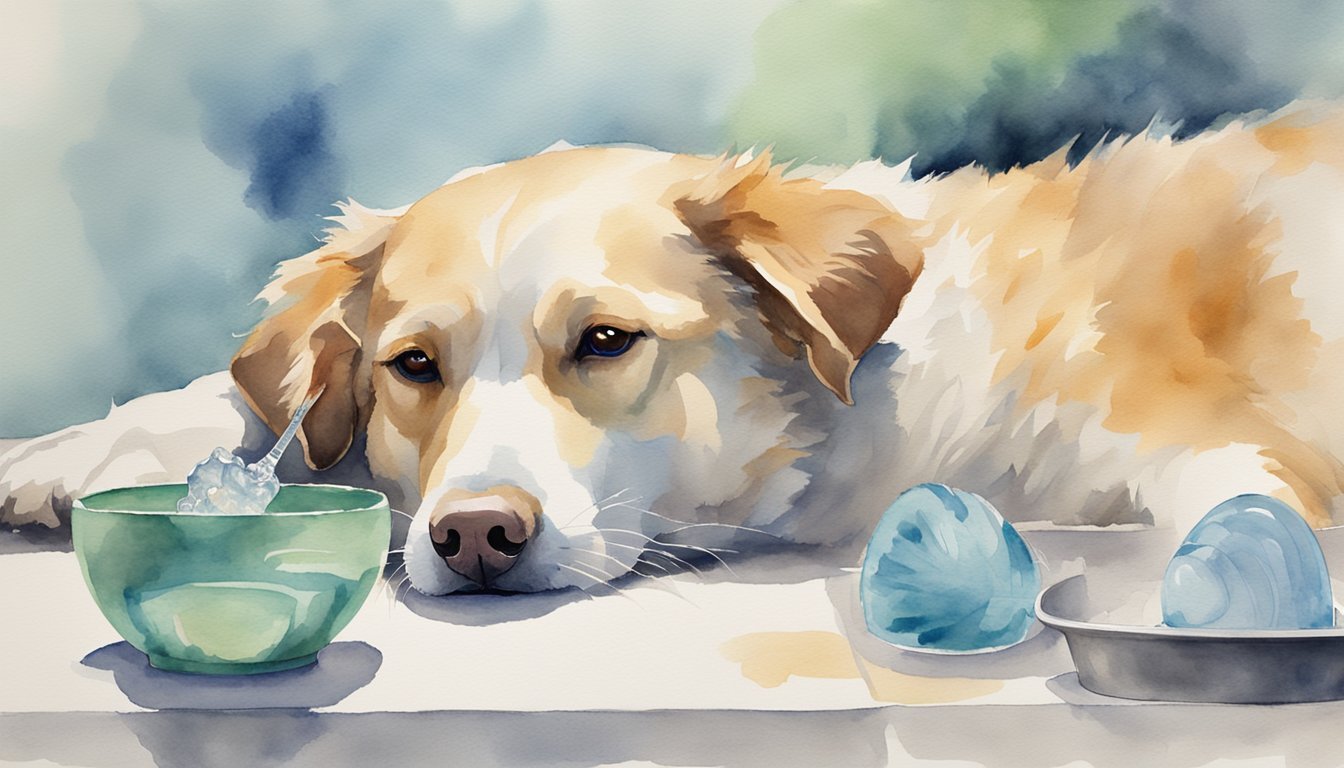Understanding Dog Panting
Panting is a natural and essential behavior for dogs to regulate their body temperature. This section will help dog owners distinguish between normal panting and signs that may indicate a health problem.
Identifying Normal Vs. Excessive Panting
Normal panting occurs commonly in dogs after physical activity or in response to excitement and is generally not a cause for concern. It’s their way of cooling down since they cannot sweat through their skin like humans. Normal panting should be steady, relatively quiet, and should resolve as the dog cools down or calms down from excitement.
Excessive panting, on the other hand, can be a symptom of underlying issues such as heatstroke, fever, or illness. This type of panting is often louder, appears more labored, and can occur even without exercise or warm temperatures. Signs of excessive panting may include:
- Rapid breathing that does not slow down after rest
- Audible distress in breath sounds
- Extreme tongue extension
If a dog exhibits such heavy panting alongside other symptoms such as lethargy, vomiting, or an inability to settle, they should be examined by a veterinarian promptly to determine the underlying cause.
Common Reasons for Panting
-
Temperature Regulation: Dogs release heat from their bodies through panting. It is a critical response to overheating and helps to prevent conditions like heatstroke.
-
Anxiety and Stress: Dogs often pant when they are anxious or stressed. This can be due to various triggers, such as loud noises, unfamiliar environments, or separation from their owners.
-
Excitement: Dogs may pant when they are excited or happy, which is normal and should not be a concern unless it becomes excessive.
-
Health Conditions: Panting can be a sign of pain or a symptom of a health condition such as lung disease, heart disease, or even certain metabolic disorders. Brachycephalic breeds, like Bulldogs and Pugs, are also more prone to panting due to their shorter airways.
-
Symptoms of Illness: Along with heavy panting, symptoms like high fever, consistent coughing, or labored breathing could indicate serious illness and prompt a visit to a vet.
When observing a dog’s panting, it is essential to take into account the context, environmental conditions, and other accompanying symptoms. Understanding a dog’s body language and knowing their normal behavior patterns can help owners recognize when panting is benign or a sign that something is amiss.
For more comprehensive information on how to calm a panting dog and potential health-related panting, consider reviewing materials like the steps provided by BetterVet and the advice offered by Hepper.
Calming Strategies for Panting Dogs

Panting can indicate a range of emotions and conditions in dogs, from normal behavior to signs of anxiety or health issues. Understanding and applying the right calming strategies can help soothe a panting dog, ensuring their wellbeing and comfort.
Immediate Calming Techniques
To quickly calm a panting dog, dog owners can focus on environmental modifications and immediate actions. A simple step like moving the dog to a cool room or shady spot can alleviate panting due to heat. Offering cool water is essential for hydration and cooling down an overheated dog. Using an anti-anxiety wrap or Thundershirt can provide instant relief to an anxious dog by applying gentle, constant pressure similar to swaddling an infant. Another effective method is gentle petting or massage, which can help relax a stressed dog and reduce excessive panting. If the panting is due to skin discomfort, using the best dog shampoo for itchy skin during bath time can soothe irritation and promote overall comfort. In cases of persistent panting, consulting a veterinarian is crucial to rule out any underlying health issues.
If panting is due to excitement or overexertion, engaging in a short, relaxing activity such as a slow-paced walk might redirect the dog’s energy. Presenting ice cubes can also serve as a fun treat while helping to reduce body temperature.
Long-Term Calming Solutions
For persistent issues with panting due to anxiety, exploring calming supplements or medication prescribed by a veterinarian might be beneficial. Providing consistent company can help minimize separation anxiety, and routine may prevent behavioral triggers for panting.
Other long-term techniques include environmental adjustments such as ensuring access to a cool place on hot days and pheromone therapy, which uses calming pheromones to mimic the natural pheromones released by mother dogs to calm their puppies. Proper veterinary care is vital when panting appears to be related to health issues like an allergic reaction or a loss of appetite. Regular visits to the vet help maintain the dog’s overall health and can pre-empt issues that may lead to excessive panting.

